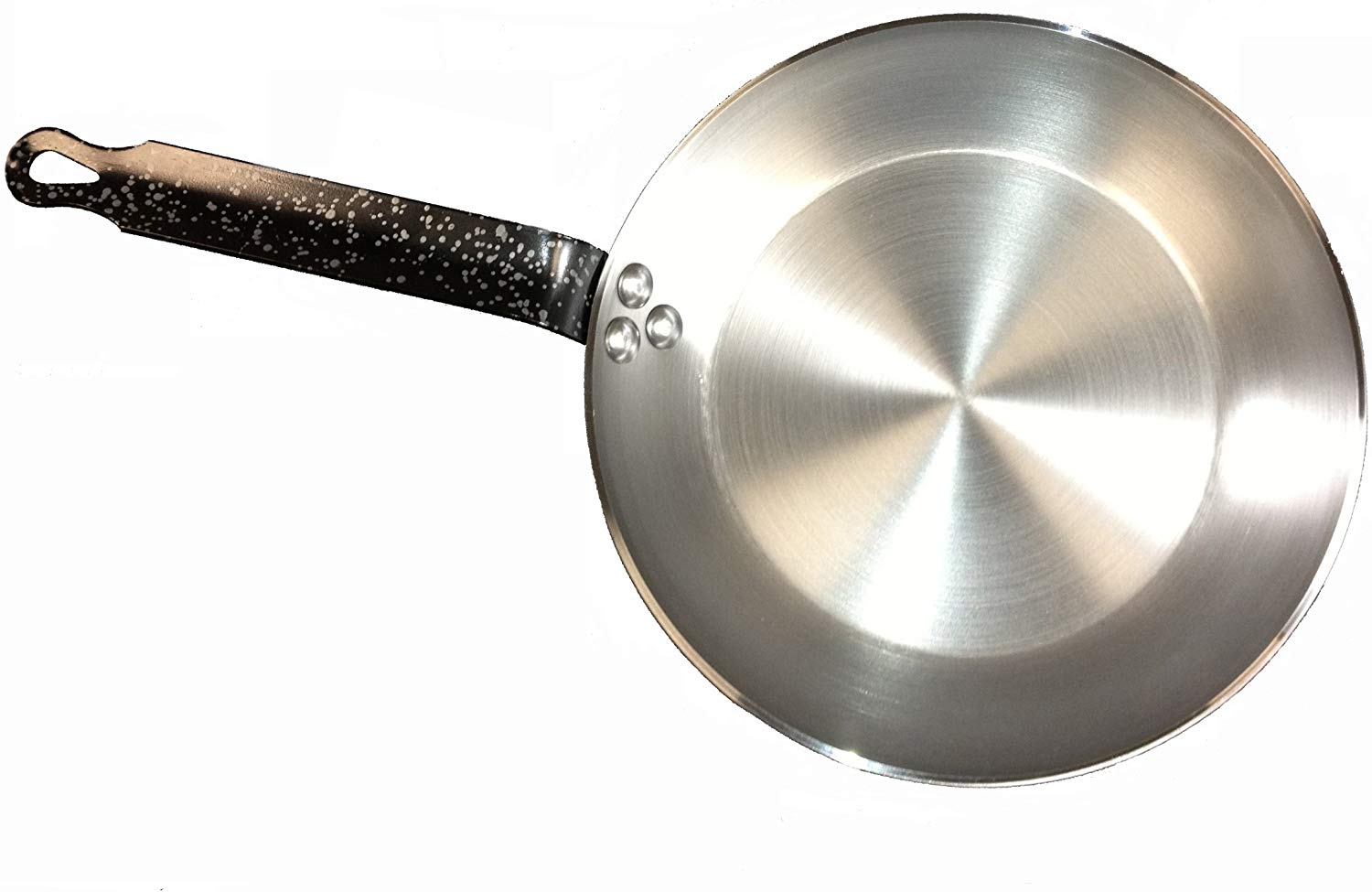

Those two features make them much better suited to tossing foods. Since carbon steel pans are made from stamped or spun from sheets of metal (instead of cast in a form), they have sloped sides and are thinner and lighter than cast iron. However, there are a few important differences to know about, we’ll go over them below:Ĭarbon steel pans don’t work so well with water-based cooking (stewing or braising) compared with cast iron.Ĭarbon steel loves fat and “hates” water, while cast iron is not a great match for stir-frying because it retains heat and will overcook your vegetables very fast. UsesĬast iron and carbon steel have a lot in common: their high durability, nonstick capabilities, and the special care you need to keep them for years.

👉 You can find carbon steel woks, skillets, carbon steel paella pans, and specialty cookware. This means that you can use them on all cooktops, including induction, barbecue grill, or campfire. Steel is also an alloy of iron and carbon, but it has to have less than or exactly 2% carbon.Ĭarbon steel pans are thinner and lighter than cast iron, and also more responsive to temperature changes.
:max_bytes(150000):strip_icc()/__opt__aboutcom__coeus__resources__content_migration__serious_eats__seriouseats.com__images__2015__03__20150305-black-steel-pans-daniel-gritzer-2-641a2b2afdfc4f43ab37953f64e6d467.jpg)
What is Carbon Steel? My carbon steel paella pan The glaze prevents rusting and thus the pan does not need seasoning and allows for harsher cleaning.Įnameled cast iron is excellent for slow cooking and drawing flavor from foods. What is Enameled Cast Iron?Įnameled cast iron is a cast iron pan that has an enamel glaze applied to the surface. 👉 You can find cast iron skillets, griddles, dutch ovens, muffin pans, and other specialty shapes. However, experts claim that in the past few years, cast iron pans’ quality has deteriorated, and is not as durable as it used to be. It is built to last and is difficult to ruin. That’s why you’ll find 50-year-old pans at yard sales. READ: The 6 Best 12-Inch Cast Iron Skillets This also means that cast iron pans are slower to heat and cool down, but retain heat longer. This is why cast iron pans are heavy and thick. The carbon gives cast iron its rough feel and makes it more fragile than steel. Ĭast iron contains 2%-3.5% carbon (compared with 1-2% only in steel). 👉 In a Hurry? Jump to the price difference between carbon steel and cast iron pans! What is Cast Iron? My cast iron skilletĬast iron is an alloy of carbon and iron (like steel), but with more carbon in it, compared to steel.

Mix and match to enjoy the slight difference in cooking with them. Ultimately, the differences between the two are not enough to invest in just one of them. The sides of the cast iron pan are usually vertical (great for baking) while the carbon steel sides tend to be angled (best for sauteing). Carbon steel is not as heavy and thick as cast iron – without it affecting the cooking experience. While both pans retain heat very well, carbon steel heats up faster and won’t keep the heat as long as cast iron.


 0 kommentar(er)
0 kommentar(er)
